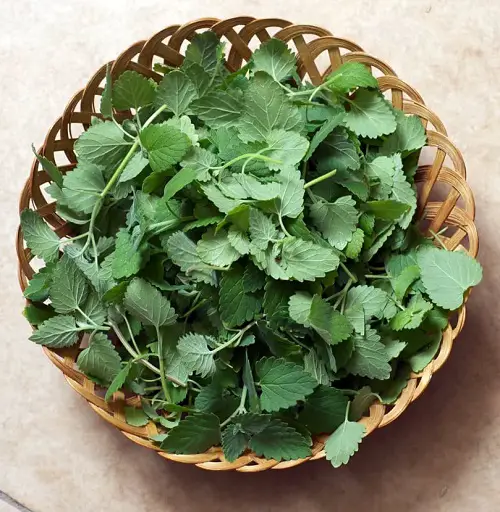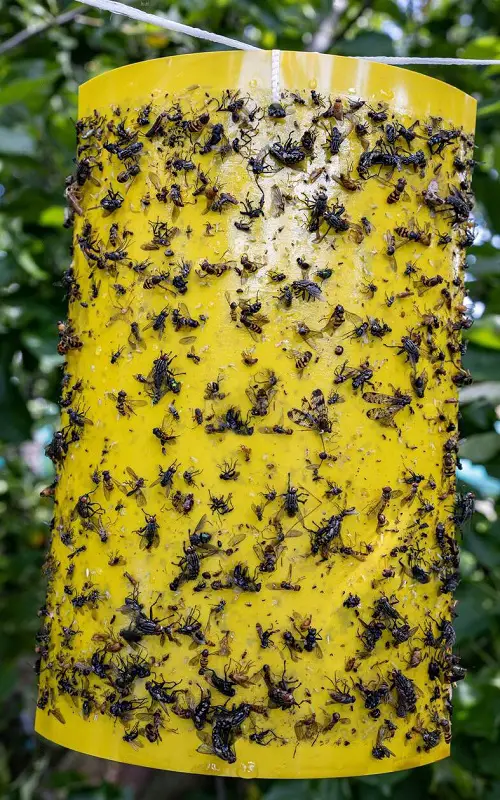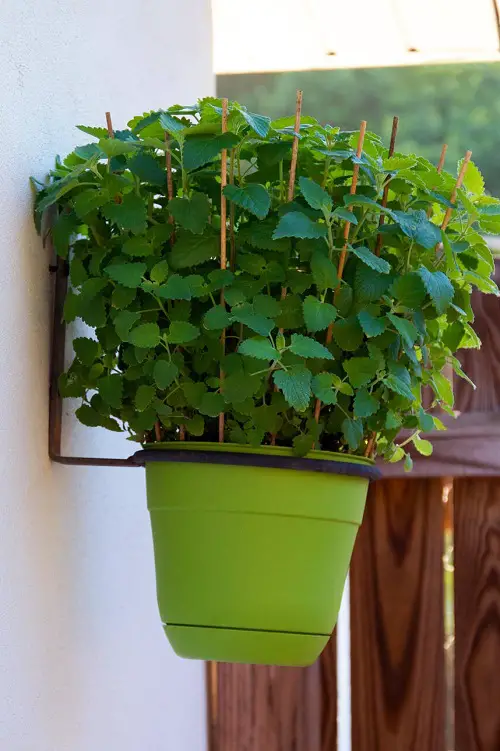If you are worried about White Spots on Catnip Leaves, then find expert tips on how to prevent and treat them to keep your plant healthy.

Noticing White Spots on Catnip Leaves can be alarming. Understanding the underlying causes and how to deal with them is essential for maintaining the health and vitality of your plant.
Check out our article on growing catnip
White Spots on Catnip Leaves
While white spots on Catnip leaves often indicate a spider mite infestation, they can also be caused by thrips, sunscalds, and other pests.
Finding white spots on your Catnip leaves may initially seem like a catastrophe due to the possibility of pest infestation. Still, with a little care, these resilient herbs can be restored to their former health.
Reason Behind White Spots on Catnip
1. Thrips
Catnip can be infested by various types of thrips, which appear in colors ranging from black, brown, and golden to orange. It’s important to be vigilant as adult thrips can fly and spread to other plants.
They feed on the plant sap from the leaves and tender stems, leaving them dry and white.
To identify these pests, you may need a magnifying glass as they are hard to spot with the naked eye. Under magnification, they look like tiny lobsters!
Here are the best ways to get rid of Thrips
2. Spider Mites

Although spider mites are hard to detect, a close inspection may reveal evidence of their presence, such as telltale webbing and small, black spots moving around the leaves. When spider mites infest catnip leaves, they tend to dry up and develop a stippled, yellowish appearance.
The onset of the infestation is marked by the appearance of some white spots on the leaves, which progressively become more frequent and denser, ultimately resulting in the demise of the Catnip plant. Find how to get rid of Spider Mites.
3. Sunscalding
If you notice an increase in the occurrence of white spots on your Catnip leaves, it is advisable to investigate the amount of sunlight the plant is receiving.
If your Catnip is placed outdoors, prolonged exposure to sunlight can cause damage to the leaves and sometimes even scarring on the stems.
This damage can make the plant more vulnerable to bacterial and fungal infections, which can also manifest as white spots on the leaves.
4. Powdery Mildew
Powdery mildew is a common fungal disease that affects many plants, including catmint. The fungus causes white spots to form on the leaves, which can then spread quickly.
To help control powdery mildew on catmint, be sure to provide the plant with adequate air circulation and water it only when the soil is dry. Plant catmint in areas with full sun and good air circulation, and avoid crowding the plants.
Learn How to Use Epsom Salt as a Fungicide
How to Treat White Spots on Catnip?
1. Isolate the Plant
The initial step is to separate your Catnip from other plants and thoroughly examine the surrounding plants for any indications of infestation.
2. Discard Leaves with White Spots
To prevent the spread of pests, remove any leaves with white spots. Additionally, it is crucial to dispose of the infected leaves by burning them, as this will eliminate any chance of the bugs spreading further.
3. Use Rubbing Alcohol
If you notice any insect infestation on your plant, clean the leaves and stem with a diluted rubbing alcohol solution. To eliminate any webbing or sticky substances, you should carefully clean the entire plant.
4. Spray Insecticide
To protect your Catnip plant from insects, use an insecticide spray. However, since Catnip is an edible herb, it’s recommended to opt for a natural insecticide.
Prepare your own insecticide spray by diluting neem oil or apple cider vinegar. It’s important to spray the solution on your Catnip once a week for two months to ensure maximum protection.
5. Use an Insecticidal Soap
Insecticidal soap is a safe and eco-friendly solution and an organic alternative to chemical insecticides. You can easily make insecticidal soap at home by following these simple steps:
- Fill a spray bottle halfway with water and add one tablespoon of liquid soap.
- Shake the bottle vigorously to mix the solution thoroughly.
- Spray your plants in the morning or evening to effectively get rid of bugs.
6. Put Some Garlic Cloves or Coffee Grounds
To naturally repel insects and bugs from your plant, you can try using garlic or coffee grounds. Simply place a few crushed cloves of garlic cloves or sprinkle some coffee grounds on the soil in the pot, which will help keep the bugs at bay.
Learn how to make garlic water pesticide for plants
6. Use Sticky Traps
If you’re looking for an effective way to catch flying bugs such as thrips, a sticky trap can be a great solution. You can create your own by spreading tacky glue on a yellow piece of paper and hanging it near your plant. For optimal results, make sure the trap is placed in close proximity to the plant.
How to Prevent White Spots on Catnip Leaves?
1. Ensure the Plant Gets Proper Light
Sunlight eliminates pests by dehydrating them. Hence, it is recommended to expose Catnips to 3-4 hours of sunlight.
2. Use a Well Draining Potting Mix
For optimal growth, it is advisable to plant them in a potting mix that is light and quick-drying. To ensure the potting soil remains dry, it is recommended to add cocopeat and perlite.
3. Avoid Over Watering
Water Catnip only when the topsoil appears dry, ensuring that the soil is moist but not dripping. Also, avoid wetting the foliage in the process. Look at the signs of overwatering.
4. Do Not Overharvest
It’s crucial to maintain a consistent rate of harvesting that is in line with the plant’s growth and production. Too much harvesting can expose the cuts, exposing the plant to diseases and pests, which can cause white spots on the leaves.
Here are the best ways to use Insecticidal Soap for the garden
Conclusion
The best way to keep your plant safe from the white spots is to inspect it every week. This will help you to spot any infestation in time and use the needed measures to keep the plant healthy.







